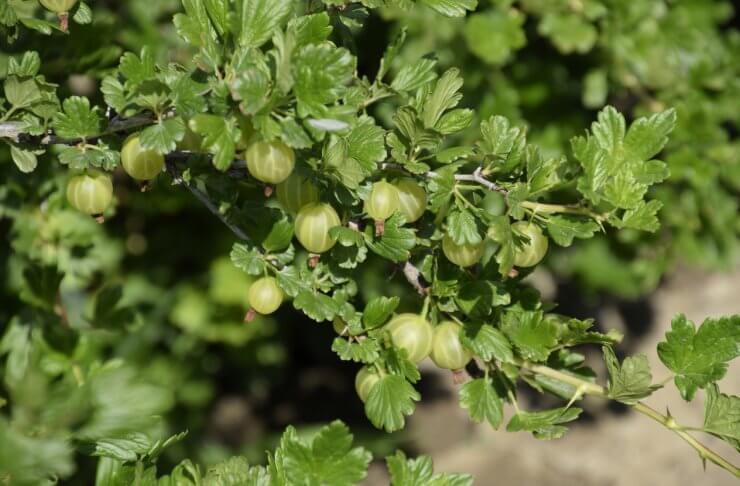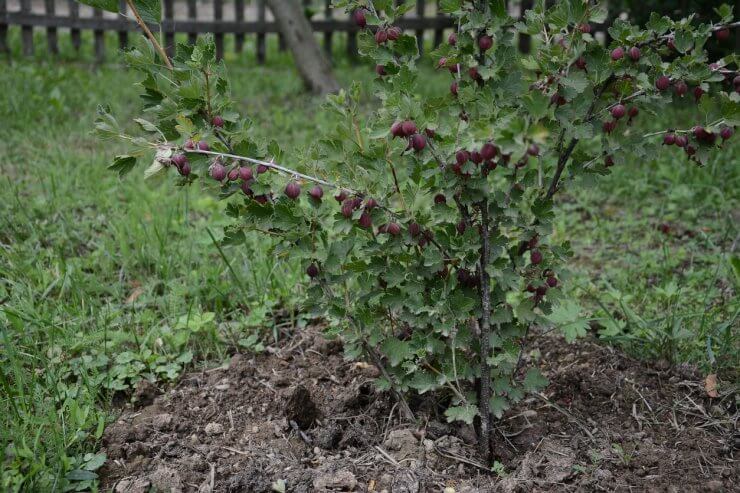
Gooseberries in the garden
Gooseberries love sunshine and well-draining soil, but will still thrive with some shade. What they really like is cool, moist soil without getting wet feet. Gooseberries are fairly easygoing about the quality of their soil, as long as it has a pH between 5.5 and 7.0. And as long as the soil drains well, they seem to be fairly adaptable.
One thing gooseberries don’t like is weeds. Gooseberries have shallow roots, and they don’t like to compete for resources. So keep the ground well-weeded, and consider putting down a layer of mulch to deter future weed growth. Gooseberry plants are self-fertile, so you only need to plant one. But if you plant two, you’ll get a better harvest.
Gooseberries grow best in USDA Plant Hardiness Zones 3 to 8. If you live somewhere colder or warmer, you’ll want to consider growing your gooseberries inside. But what about the thorns? What about the plant spreading out? No worries; there are ways to deal with that.
The keys to happy gooseberry shrubs are sunlight, well-drained soil, and good air circulation. If you can provide those three things, you can grow gooseberries just about anywhere.
Raised beds and open ground

Large ripe gooseberries on branches
A raised garden bed or planter is an excellent option for growing gooseberries if you don’t have soil that’s ideal for gooseberry bushes (heavy clay soil, for example). Raised beds also help with drainage, which is essential for a healthy gooseberry plant. You can even buy raised beds or build one yourself to fit your space.
Watering and weeding will be easier if you have your gooseberry bush in a raised bed or planter. Keep in mind that these bushes can grow up to 5 feet—and the branches have thorns—so harvesting may become a bit of challenge if you plant your gooseberry in a raised bed that’s too high. But if you don’t have quite the right land to grow gooseberry, a raised bed is still a good alternative to growing in open land. And if you fill a raised bed with packaged garden soil, you’re providing a cleaner and healthier environment for your bushes from the outset.
Packaged garden soil means less weeding than you’d have from digging a hole in the ground; and with a raised bed or container, there’s less bending down to do your weeding!
Gooseberries are really a gardener-friendly plant, and they’ll grow well in open ground—as long as they have partial to full sunshine, good drainage, and the right pH (5.5 to 7.0). If you’re lucky enough to live in a zone where your gooseberry bushes can live outdoors year-round, consider incorporating gooseberries into your garden.
However you plant your gooseberries, you can, if you like, train them to grow along a trellis or a wall for easy access to the berries come harvest time. The gooseberry is really a very cooperative plant!
How do you grow your gooseberries—in open land, in raised beds, or in containers? Why do you prefer your method? Please tell us your tips and tricks for growing great gooseberries.


 Previous
Previous

